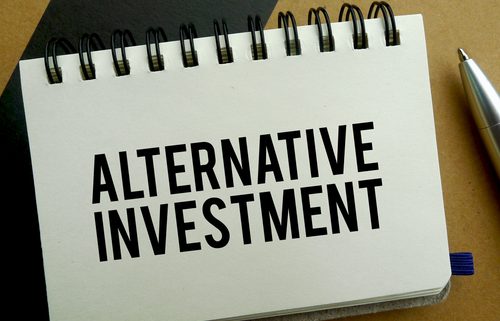What are Nontraditional Retirement Assets in a Self-Directed IRA, anyway?
If you’re a regular follower of this blog, you might have heard us use this term before. Nontraditional retirement assets. But it’s a little vague. What exactly does it mean, and what does it have to do with Self-Directed IRAs? Rather than give you one definition, we thought we’d explain it as a list. After all, there isn’t one type of nontraditional retirement asset possible through a Self-Directed IRA. When you learn to invest on your own, you can use a Self-Directed IRA to access all sorts of nontraditional assets.
Nontraditional Assets in a Self-Directed IRA: A Quick Definition
We know we said this wouldn’t just be a singular definition, but it will help if we use this as a baseline:
Nontraditional retirement assets are those classes of investments available for Self-Directed IRA investors that might not fit the traditional mold of stocks, bonds, and stock/bond funds.
That’s it. Nothing scary and nothing too complicated. Some investors might be thrown off by the fact that you can put retirement assets into things that aren’t stocks or mutual funds, but when you stop and think about it, some of the assets we’ll be talking about here can actually be very “traditional” in the sense that they have a long history of use.
Why bother with nontraditional assets? According to Raymond James, investors often look at nontraditional assets if they want less correlation with the stock market. For example, a piece of real estate generating rent in a slightly lagging economy can be a buoy against problems like inflation. For people thinking about retirement, a nontraditional asset is one way to boost confidence that a portfolio is well-diversified and not reliant on the stock market headlines for success.
What are the Nontraditional Assets Available with a Self-Directed IRA?
Now that we’ve set the definition, let’s get to some examples. Here are some of the most popular nontraditional asset’s investors can use in a Self-Directed IRA:
- Real estate. This is a primary one, and often the reason investors flock to Self-Directed IRAs in the first place. Real estate is a broad category that can include commercial property, residential property, raw land, apartments, and more. A popular model is for investors to buy a piece of real estate such as a home, then rent it out to tenants for consistent income.
- Precious metals. Gold, silver, palladium, platinum. Precious metals are alternative investments that have a history dating back thousands of years, which is what gives many retirement investors so much confidence that their assets will hold on to their value for the long-term.
- LLCs and private stock. An investor can put money into private companies, often for different purposes. For instance, an LLC investor can create a “Checkbook IRA” arrangement, while another type of investor might simply choose to seek out growing companies that aren’t yet listed on public stock exchanges.
- Tax liens. A tax lien can be an asset that generates consistent income for the holder, possibly resulting in the investor taking over the underlying asset as well.
- Private loans. A private loan can be a powerful way to generate passive income while diversifying out of the stock market, because it only relies on the ability of one party to make payments to your Self-Directed IRA.
Is this a complete list of nontraditional retirement assets? Of course not! There is so much more that you can hold within a Self-Directed IRA. But hopefully, this list will serve as a demonstration of what kinds of nontraditional retirement assets are available when you think outside the box of standard stocks and bonds.
Interested in learning more about Self-Directed IRAs? Contact American IRA, LLC at 866-7500-IRA (472) for a free consultation. Download our free guides or visit us online at www.AmericanIRA.com.



